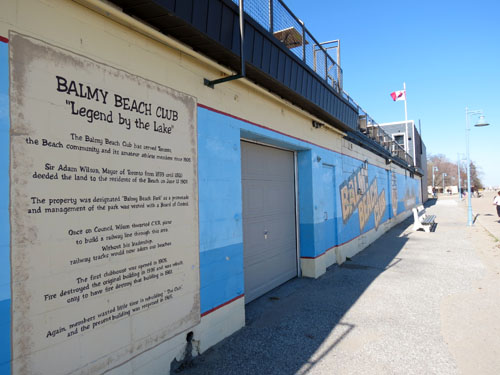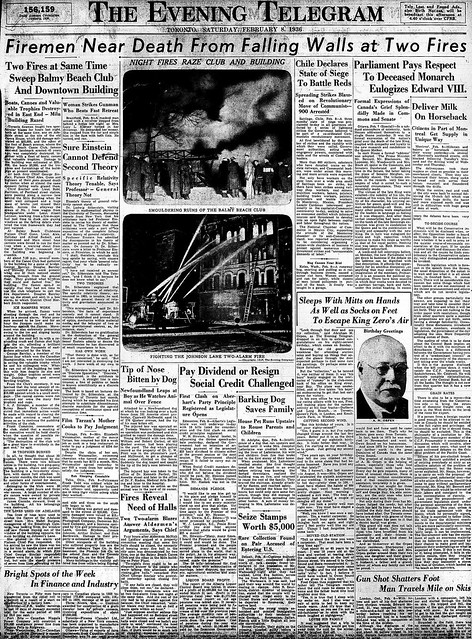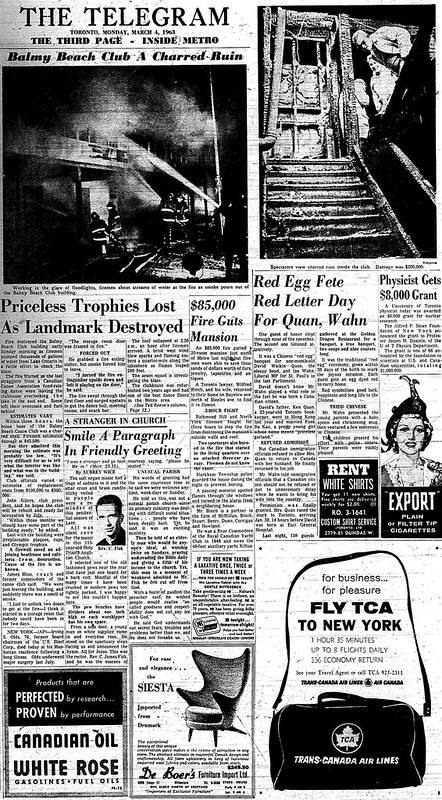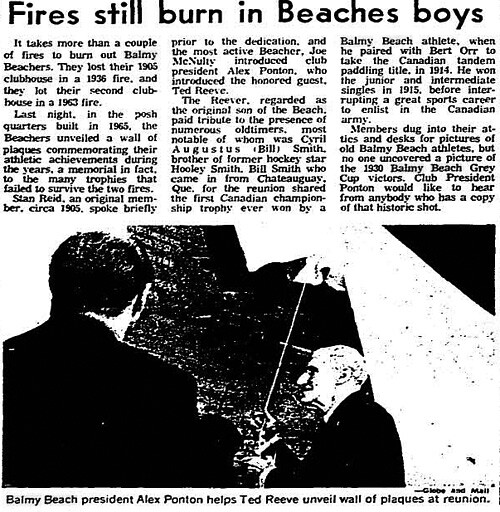This installment of my "Ghost City" column for The Grid was originally published on April 23, 2013.
 |
| Photo taken April 2013. |
When prominent jurist and one-time Mayor of Toronto
Sir Adam Wilson partitioned his property along Lake Ontario in January 1876, he set aside a portion for use as a public “promenade and recreation grounds.” Within a few years, the community of Balmy Beach grew around Wilson’s lands, which sat amid the growing amusement parks and cottages that spurred the development of The Beach.
In 1903, the commissioners overseeing the parkland Wilson set aside were approached by the Beach Success Club, an all-male debating society that was branching out into athletic activities. The club applied to build
a members-only clubhouse and lawn-bowling green at the foot of Beech Avenue. When the plan appeared bound for approval in August 1903, the
Star reported that “this new move has made more people look towards Balmy Beach” as a place to purchase property.
 |
| Ladies' paddling team, Balmy Beach Club, circa 1920. City of Toronto Archives, Fonds 1244, Item 215. |
Opened in August 1905, the
Balmy Beach Canoe Club’s first clubhouse included a grand second floor porch from which members gazed out into the lake. It became a gathering spot for the area’s finest athletes, who competed in sports ranging from rugby to squash. A fierce canoeing rivalry developed with Kew Beach. The skills of its members were exhibited by the six medals canoeist Roy Nurse won during the 1924 Summer Olympics and its
football squad’s Grey Cup victories in 1925 and 1930.
 |
| Front page, Telegram, February 8, 1936. Click on image for larger version. |
Around 7:30 p.m. on February 7, 1936 members playing their weekly bridge game noticed smoke seeping from the ground floor. Their first thought was to save the numerous trophies the club had collected—the
John W. Black Trophy for junior fours in canoeing was given the highest priority. Its survival seems to have been placed higher than that of caretaker James Coombe. According to the
Globe, “nobody thought to warn the Coombe family upstairs of their peril, and it was only when smoke came belching up the staircase that the Coombes, with the exception of Bert, aged 25, became aware of the fire and rushed downstairs.” Bert was cut off by the blaze and had to escape via the roof and a balcony. The Coombes family lost all of their belongings, while the club lost most of its trophies and over 100 boats.
 |
| Balmy Beach Club, June 1953. Photo by James Salmon. Toronto Public Library, R-5451. |
A replacement clubhouse opened the following year. Among its attractions was a dance floor that played host to big bands led by locals like future media and sports mogul
Jack Kent Cooke. A unique two-step dance popularized at the club, “the Balmy,” became popular across the city. An addition built in the late 1940s offered fireproofed protection for the club’s canoes.
 |
| Telegram, March 4, 1963. Click on image for larger version. |
This proved a wise move, as fire struck again on March 3, 1963. As the last stragglers from a fundraising dance departed during the early morning hours, they smelled smoke. The fire began in the storage room, swept through the first floor, destroyed many trophies, and gutted the second floor dance hall, meeting rooms, and snack bar. Unlike the earlier blaze, the building wasn’t entirely destroyed thanks to cement wall reinforcements added the previous year. “It does hurt a bit today,” long-time club member
Ted Reeve reflected in his
Telegram sports column the following day, “but it’ll be up again.”
 |
| Globe and Mail, November 25, 1967. |
And it was. The club rejected a private promoter’s plan to turn the space into a country club featuring a curling rink, tennis courts, and bowling alleys. “We don’t want a restrictive atmosphere,” club president John Sillers told the
Globe and Mail. “Our primary aim is to get young people who will participate in wholesome recreation—not just people who just want to sit and look at the lake.” City Council agreed to underwrite two mortgages to rebuild the club, which reopened in 1965. A wall of plaques commemorating achievements recognized by the lost trophies was unveiled by Reeve during a 1967 ceremony attended by at least one original club member.
Today, the clubhouse provides spaces for members to stay fit and relax over a beer. A mural facing the boardwalk gives strollers a glimpse into its many athletic accomplishments.
Additional material from The Beach by Glen Cochrane and Jean Cochrane (Toronto: ECW, 2009), the February 8, 1936 edition of the Globe, the March 4, 1963, June 10, 1963, and November 25, 1967 editions of the Globe and Mail, the August 15, 1903, February 8, 1936, and March 4, 1963 editions of the Toronto Star, the February 8, 1936 and March 4, 1963 editions of the Telegram, and the July 2003 edition of Toronto Life.







Comments